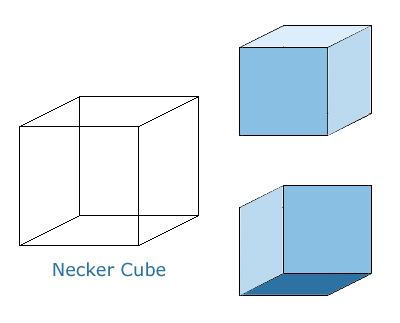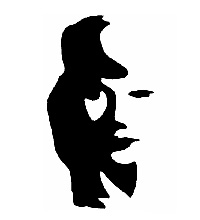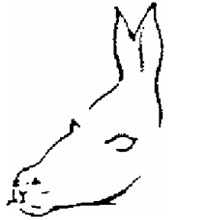Ambiguous Illusions
Ambiguous illusions are pictures or objects that generally present the viewer with a mental choice of two interpretations, each of which is valid. Often, the viewer sees only one of them, and only realizes the second, valid, interpretation after some time or prompting. When they attempt to simultaneously see the second and first interpretations, they suddenly cannot see the first interpretation anymore, and no matter how they try, they simply cannot encompass both interpretations simultaneously- one occludes the other. The Necker cube is a well known example; another instance is the Rubin vase.
The Necker cube is an ambiguous line drawing, first published in 1832 by Swiss crystallographer Louis Albert Necker. It is a wire-frame drawing of a cube in isometric perspective, which means that parallel edges of the cube are drawn as parallel lines in the picture. When two lines cross, the picture does not show which is in front and which is behind. This makes the picture ambiguous; it can be interpreted two different ways. When a person stares at the picture, it will often seem to flip back and forth between the two valid interpretations

Here are a few more ambiguous illusions, where there are two possible interpretations for each image. Be sure to check the Gallery for more ambiguous pictures.

Sax player or woman's face?

Seal or donkey's face?

Bacchus or couple kissing?